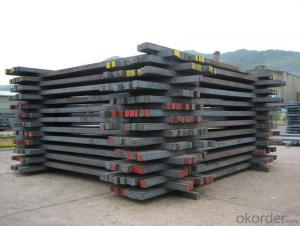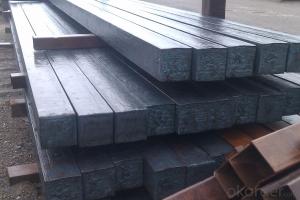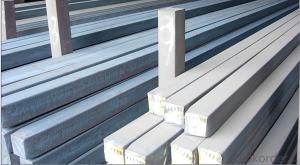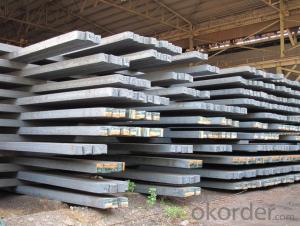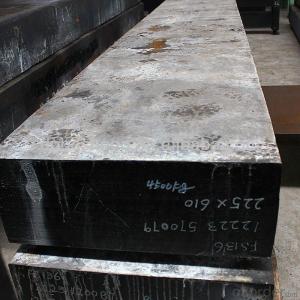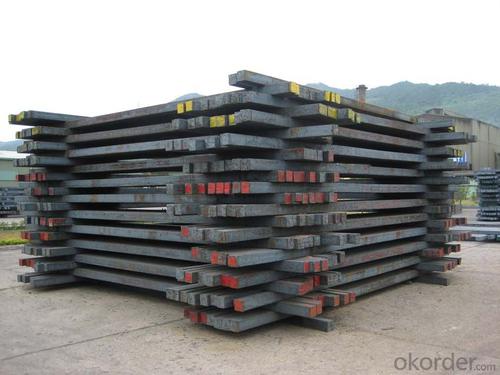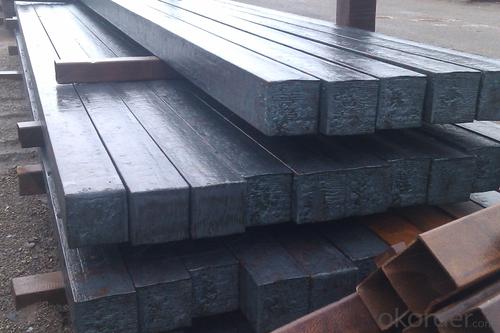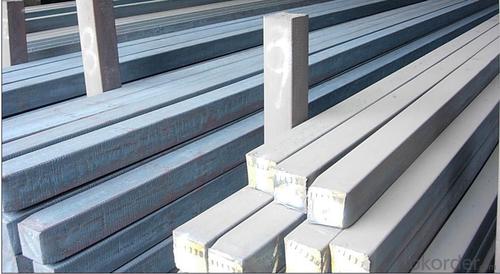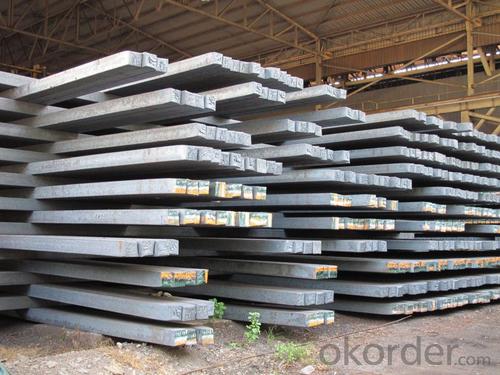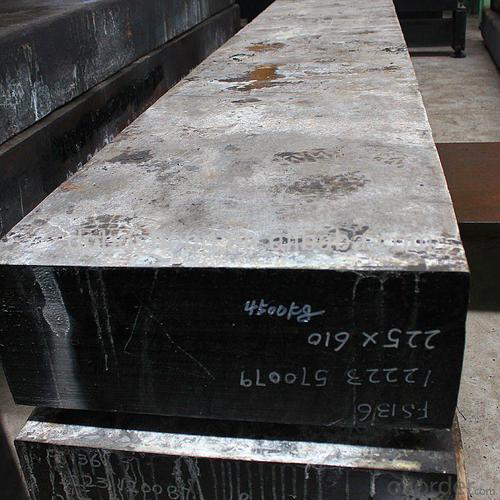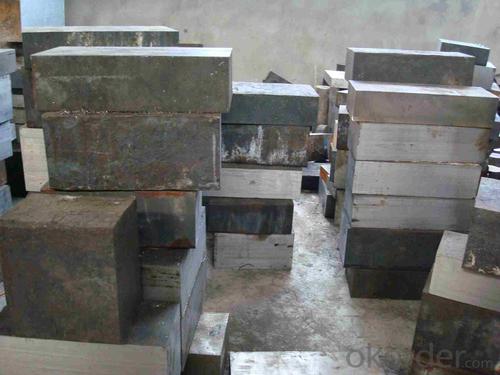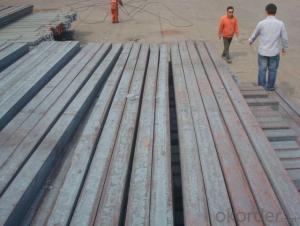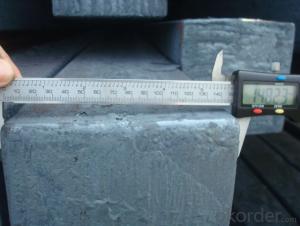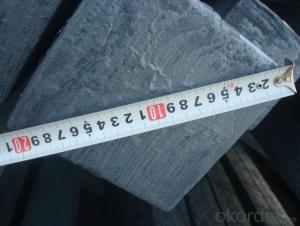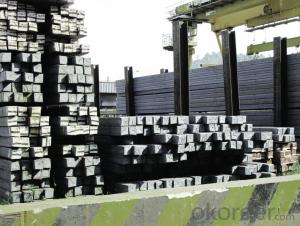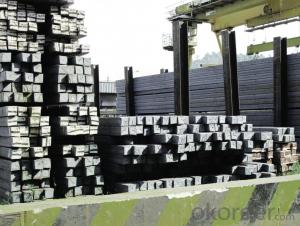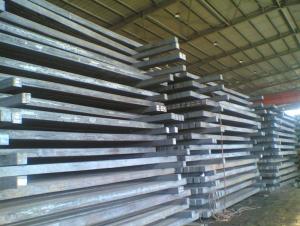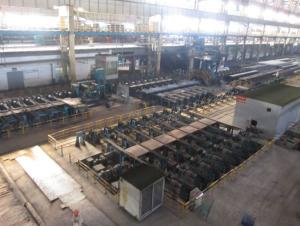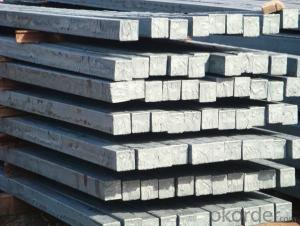Hot Rolled Square Steel Billet 3SP Standard 120mm
- Loading Port:
- Shanghai
- Payment Terms:
- TT OR LC
- Min Order Qty:
- 2000 m.t.
- Supply Capability:
- 10000 m.t./month
OKorder Service Pledge
OKorder Financial Service
You Might Also Like
Structure of Hot Rolled Square Steel Billet 3SP Standard 120mm
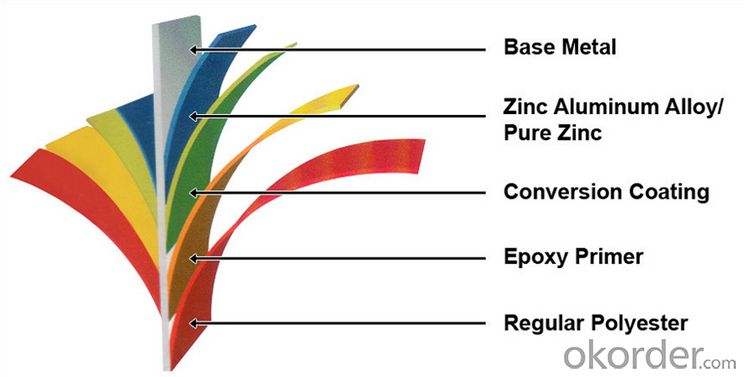
Description of Hot Rolled Square Steel Billet 3SP Standard 120mm
PPGI is made by cold rolled steel sheet and galvanized steel sheets as baseplate, through the surface pretreatment (degreasing, cleaning, chemical conversion processing), coated by the method of continuous coatings (roller coating method),
and after roasting and cooling. Zinc coating: Z60, Z80, Z100, Z120, Z180, Z275, G30, G60, G90
Alu-zinc coating: AZ60, AZ80, AZ100, AZ120, AZ180, G30, G60, G90
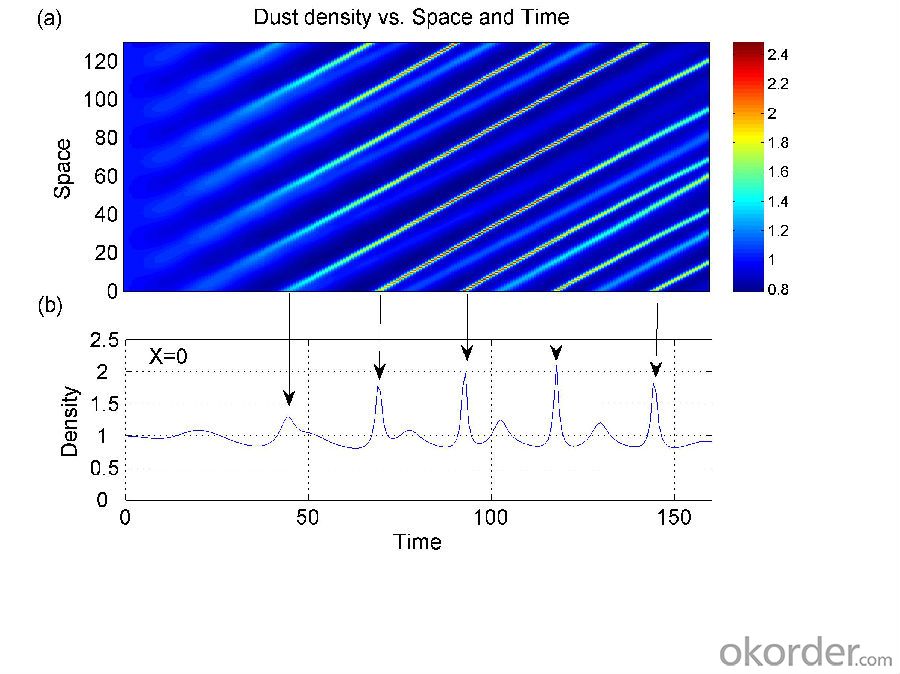
Main Feature of Hot Rolled Square Steel Billet 3SP Standard 120mm
1) Excellent corrosion resistance: The zinc layer provides a good protection of Pre-painted Galvanizeed Steel Sheet.
2) High heat resistance: The reflective surface of the material aids in efficiently reflecting the sunlight away and in turn reducing the amount of heat transmitted. The thermal reflectivity converts into energy savings.
3) Aesthetics: Pre-Painted Galvanized steel sheet is available in plethora of patterns and multiple sizes as per the requirements that given by our customers.
4) Versatility: can be used in the various areas.Standard seaworthy export packing: 3 layers of packing, inside is kraft paper, water plastic film is in the middle and outside GI steel sheet to be covered by steel strips with lock, with inner coil sleeve.
Applications of Hot Rolled Square Steel Billet 3SP Standard 120mm
1) Automotive bodies: filters, fuel tanks, etc.
2) Construction materials: roofings, welding pipes,
3) Electric and electronic appliances: computer cans, etc.
4) Steel cans: containers, etc.
5) Steel furniture: washing machines, refrigerators, microwaves, etc.
6) Drums
7) Office equipment: printer, recorders, etc.
8) Motors and transformers
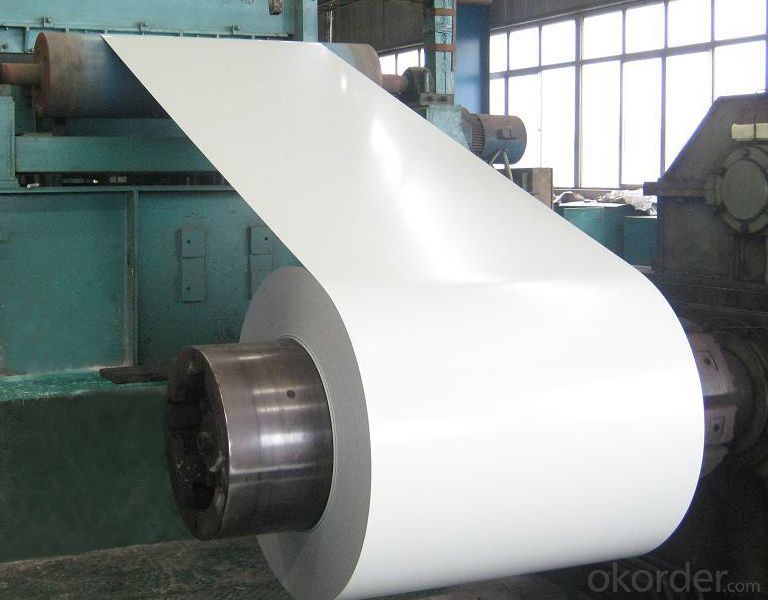
Specifications of Hot Rolled Square Steel Billet 3SP Standard 120mm
| Classified symbol | Yield Point Minimum N/mm2 | Tensile Strength Minimum | Elongation Minimum % | Application | ||||
| N/mm2 | Nominal Thickness mm (t) | |||||||
| JIS | Yogic | 0.25-0.4 | 0.4-0.6 | 0.6-1.0 | 1.0-1.6 | |||
| G3312 | specification | |||||||
| CGCC | CGCC | -205 | -270 | -20 | -21 | -24 | -24 | Commercial |
| CGCD | CGCD | --- | 270 | --- | 27 | 31 | 32 | Drawing |
| --- | CG340 | 245 | 340 | 20 | 20 | 20 | 20 | Structural |
| CGC400 | CG400 | 295 | 400 | 16 | 17 | 18 | 18 | Structural |
| CGC440 | CG440 | 335 | 440 | 14 | 15 | 16 | 18 | Structural |
| CGC490 | CG490 | 365 | 490 | 12 | 13 | 14 | 16 | Structural |
| CGC570 | CG570 | 560 | 570 | --- | --- | --- | --- | Structural |
| ASTM Designation | Yield Point Minimum | Tensile Strength Minimum | Elongation Minimum % | Application | Q/BQB 445-2004(China standard) | ASM A653/A653M | JISG 3312 | |
| ksi(MPa) | ksi(MPa) | TDC51D+Z | (CS TYPE A+Z) | CGCC | ||||
| A653(M)-99 CS TYPE A,B,C | --- | --- | --- | Commercial | TDC52D+Z | CGCD | ||
| A653(M)-99 FS | --- | --- | --- | Lock Forming | TS250GD+Z | (G250+Z) | - | |
| A653(M)-99 DS | --- | --- | --- | Drawing | TS300GS+Z | (G300+Z) | CGC 400 | |
| A653(M)-99 SS Grade33(230) | 33(230) | 45(310) | 20 | Structural | TS350GD+Z | (G350+Z) | CGC490 | |
| A653(M)-99 SS Grade37(255) | 37(255) | 52(360) | 18 | Structural | TS550GD+Z | (G550+Z) | CGC570 | |
| A653(M)-99 SS Grade40(275) | 40(275) | 55(380) | 16 | Structural | ||||
| A653(M)-99 SS Grade50(345) | 50(345) | 65(450) | 12 | Structural | ||||
| A653(M)-99 SS Grade80(550) | 80(550) | 82(570) | --- | Structural | ||||
FAQ of Hot Rolled Square Steel Billet 3SP Standard 120mm
We have organized several common questions for our clients,may help you sincerely:
1. How Can I Visit There?
Our company is located in Tianjin City, China, near Beijing. You can fly to Tianjin Airport Directly. All our clients, from home or aboard, are warmly welcome to visit us!
2. How Can I Get Some Sample?
We are honored to offer you sample.
3. Why choose CNBM?
1, ISO, BV, CE, SGS approved.
2, Competitive price and quality.
3, Efficient service team online for 24 hours.
4, Smooth production ability(50000tons/month) .
5, quick delivery and standard exporting package.
6, Flexible payment with T/T, L/C, Paypal, Kunlun bank, etc
- Q: What are the main types of steel billet rolling mills?
- Various types of steel billet rolling mills exist, each possessing unique characteristics and functionalities to cater to the diverse requirements of different industries. 1. Two-high rolling mills: These mills comprise two horizontally mounted rolls rotating in opposite directions. Two-high mills are commonly utilized for shaping and reducing the thickness of steel billets. They boast a relatively simple design and are suitable for light to medium-duty applications. 2. Three-high rolling mills: Three-high mills consist of three rolls arranged vertically in a triangular configuration. The upper and lower rolls are driven, while the middle roll remains idle and adjustable. This design allows for greater flexibility in shaping and reducing the dimensions of the billet. Three-high mills are often employed to produce high-quality finished products with precise dimensions and surface finishes. 3. Four-high rolling mills: Four-high mills possess four rolls, including two small diameter work rolls and two larger diameter backup rolls. The work rolls are driven, while the backup rolls provide support and adjust the billet's thickness. Four-high mills are highly versatile and can be utilized for a wide range of applications, encompassing both hot and cold rolling processes. 4. Cluster mills: Cluster mills consist of multiple small-diameter rolls arranged in a cluster. These rolls collaborate to reduce the billet's thickness and shape it into the desired form. Cluster mills are commonly utilized to produce high-precision products such as wires and thin strips. 5. Steckel mills: Steckel mills are specialized rolling mills designed for the production of heavy-gauge plates and strips. They incorporate a combination of a reversible rolling mill and a continuous casting machine. Steckel mills are renowned for their high productivity and the capability to manufacture a wide array of steel products with excellent surface quality. Each type of steel billet rolling mill boasts specific advantages and is suitable for particular applications. The selection of a mill depends on factors including the desired final product, required dimensions, production volume, and budgetary limitations.
- Q: How are steel billets used in the production of heat exchangers?
- Steel billets are used in the production of heat exchangers as they serve as the raw material for manufacturing the structural components, such as tubes, plates, and fins, that make up the heat exchanger. These billets are melted, cast, and then fabricated into the desired shape and size to create the necessary structural integrity and heat transfer efficiency required for heat exchangers.
- Q: What is the role of steel billets in the manufacturing of structural steel buildings?
- The manufacturing of structural steel buildings heavily relies on steel billets, which are semi-finished forms of steel. These billets act as the primary raw material for creating different steel products utilized in construction. To begin with, steel billets are instrumental in the production of long steel products like beams, columns, and rods. These components play a crucial role in forming the skeletal structure of buildings, offering support and stability. Manufacturers can shape and process the steel billets through techniques like rolling, forging, or extrusion to fabricate these vital structural elements. Due to the exceptional strength and durability of steel, it is an ideal material for constructing buildings capable of withstanding heavy loads and adverse environmental conditions. Moreover, steel billets are also employed in the manufacturing of other significant components such as plates and sheets. These flat steel products are utilized for flooring, roofing, and cladding in structural steel buildings. Apart from providing a protective and aesthetically pleasing finish to the building, these flat steel products contribute to its overall strength and stability. The consistent quality and uniformity of steel billets ensure that the resulting structural steel components possess the necessary mechanical properties, including tensile strength and ductility, to meet the safety and performance standards required by construction projects. Steel billets are frequently produced using advanced manufacturing techniques like continuous casting, which further enhances the quality and reliability of the final steel products. In conclusion, steel billets are indispensable in the manufacturing of structural steel buildings as they serve as the raw material for producing various components such as beams, columns, plates, and sheets. These components form the framework and protective elements of the building, providing strength, stability, and durability. Through meticulous processing and quality control, steel billets enable the production of high-quality steel products that satisfy the stringent requirements of the construction industry.
- Q: What are the main factors affecting the hardenability of alloy steel billets?
- The main factors affecting the hardenability of alloy steel billets include the chemical composition of the alloy, the grain size and distribution, the cooling rate during heat treatment, and the presence of alloying elements such as carbon, manganese, chromium, and molybdenum. These factors determine the ability of the steel to form and retain a hardened structure, thus affecting its overall hardness and strength properties.
- Q: What are the different methods of steel billet surface etching?
- Various industries commonly use several different methods for steel billet surface etching. These methods encompass chemical etching, electrolytic etching, and laser etching. 1. Chemical etching involves the immersion of the steel billet in a chemical solution, typically an acid, that selectively eliminates a thin layer of material from the surface. The specific chemical solution utilized depends on the etching process requirements, such as desired depth and pattern. Hydrochloric acid, nitric acid, and ferric chloride are commonly employed chemicals for steel etching. 2. Electrolytic etching entails passing an electric current through the steel billet while it is submerged in an electrolyte solution. The current facilitates a controlled dissolution of the surface metal, resulting in the desired etched pattern. Electrolytic etching provides precise control over the process and can generate intricate and detailed designs. It is often employed for marking or labeling steel billets with logos, serial numbers, or other identification marks. 3. Laser etching is a highly precise and non-contact method of surface etching. It involves the use of a laser beam to selectively remove material from the steel billet surface. Computer software directs and controls the laser beam, enabling intricate and customizable designs. Laser etching is suitable for creating permanent markings, logos, or patterns on steel billets. It finds wide application in industries such as automotive, aerospace, and electronics. Each method has its own advantages and limitations, and the choice of etching method depends on factors like the desired design, the material properties of the steel billet, and the production requirements.
- Q: How do steel billets contribute to the manufacturing of household appliances?
- Steel billets are an essential raw material in the manufacturing of household appliances as they serve as the base material for various components. These billets are shaped and processed through cutting, forging, or rolling techniques to create the required parts and structures of appliances such as refrigerator doors, washing machine drums, or oven racks. The durability, strength, and malleability of steel billets make them ideal for forming the sturdy and reliable components needed for household appliances.
- Q: How do steel billets contribute to the manufacturing of HVAC equipment?
- Steel billets are an essential raw material in the manufacturing of HVAC equipment because they serve as the base material for various components such as ductwork, frames, and structural supports. The high strength and durability of steel billets make them suitable for withstanding the demanding operating conditions of HVAC systems. Additionally, steel billets can be easily shaped and formed into intricate designs, allowing manufacturers to create complex components that optimize the efficiency and performance of HVAC equipment.
- Q: What are the main properties of steel billets?
- The main properties of steel billets include high strength, excellent formability and weldability, good machinability, and superior corrosion resistance. They also have a uniform composition and microstructure, making them suitable for various industrial applications.
- Q: What are the potential applications of steel billets in the transportation aftermarket?
- Steel billets offer a wide range of potential applications within the transportation aftermarket. One primary use in this industry involves using steel billets to produce various components and parts for vehicles. These billets possess the strength and durability necessary for manufacturing engine parts, suspension components, steering parts, and other critical components. Moreover, steel billets are well-suited for manufacturing structural components like chassis frames and body panels. The robustness and rigidity of steel make it an ideal material for these applications, allowing it to withstand the stresses and strains experienced during vehicle operation. Additionally, steel billets find use in producing wheels and rims for automobiles, motorcycles, and bicycles. Their exceptional strength and ability to handle heavy loads make steel billets the preferred choice for wheel manufacturing, ensuring road safety and reliability. Furthermore, steel billets can be utilized in manufacturing rail tracks and infrastructure for railways. The strength and durability of steel make it an ideal material for rail tracks, ensuring the secure and efficient transportation of goods and passengers. All in all, the applications of steel billets in the transportation aftermarket are diverse and extensive. They play a crucial role in manufacturing critical vehicle components and constructing infrastructure for railways, ultimately ensuring the efficiency, safety, and reliability of transportation systems.
- Q: What are the different types of rolling processes used for shaping steel billets?
- There are several different types of rolling processes used for shaping steel billets. Some of the commonly used processes include hot rolling, cold rolling, ring rolling, and skew rolling. Each process has its own advantages and is suitable for specific applications. Hot rolling involves heating the steel billet to a high temperature and then passing it through a series of rollers to shape it. Cold rolling, on the other hand, is performed at room temperature and is used to achieve tighter tolerances and improved surface finish. Ring rolling is used to produce seamless rings by gradually shaping the billet using a combination of axial and radial forces. Skew rolling is a specialized process used for producing balls or cylindrical shapes by rotating the billet at an angle to the rolling direction. Overall, these rolling processes offer various techniques to shape steel billets according to specific requirements.
Send your message to us
Hot Rolled Square Steel Billet 3SP Standard 120mm
- Loading Port:
- Shanghai
- Payment Terms:
- TT OR LC
- Min Order Qty:
- 2000 m.t.
- Supply Capability:
- 10000 m.t./month
OKorder Service Pledge
OKorder Financial Service
Similar products
Hot products
Hot Searches
Related keywords
